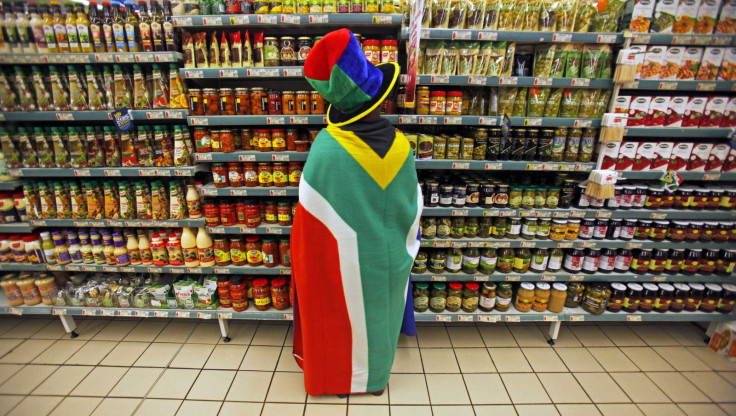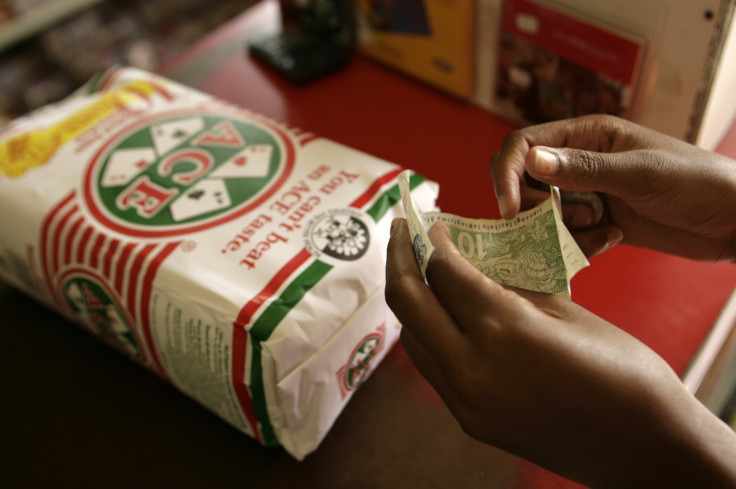Chronic Unemployment, Vast Wealth Gap and Growing Obesity: Modern Malaises Blight South Africa

According to official figures, a quarter of all South Africans are out of work - although, even more worryingly, unemployment levels are believed to be a vast two in five across the wider economy.
To make matters worse, this high rate of worklessness has changed little over the last five years - and as long as low economic growth continues to stymie desperately needed job creation, things seem unlikely to get better any time soon.
To put things in perspective, the government estimates that GDP needs to increase by more than 5% a year to cut unemployment to a somewhat more manageable 14% by 2020, not least to try and avert social unrest.
But the fact that Africa's second largest economy has been significantly under-performing since the 2009 recession means that it has also been struggling to create jobs.
A series of damaging strikes and rolling power blackouts have marked 2014 and served to put a brake on economic expansion, prompting growth forecasts to be cut to a mere 1.4% this year compared with 1.9% last year.

As a result, Statistics South Africa's third quarter labour market report indicated last week that the number of jobless had remained more or less static, dropping by a mere 3,000 to 5.15 million or 25.4% of the total workforce, down from 25.5% the previous quarter.
But long-term unemployment is a particularly concerning issue here if both individual lives and communities are not to end up blighted.
The stats indicate that some 1.4 million people in the country have been without work for more than five years. A further 1 million have been unemployed for three to five years, and another 1.1 million for one to three years, which when taken together make up a massive 20% of the jobless total.
While the state does offer some level of benefits - or social grants as they are known in South Africa - for around 15 million people, the money is barely enough to keep body and soul together, meaning that all too many people are living in desperate, grinding poverty.
But this situation, combined with relatively low average wages levels – the median income for a South African household is ZAR3,100 (£174.16) per month, according to a national study undertaken by the Southern African Labour and Development Research Unit of Cape Town University's School of Economics - makes it no surprise that the country remains the most unequal in the world in terms of the wealth gap.
To put it in perspective, according to a 2013 Global Wealth Report cited by Oxfam at the end of last month as part of its "Even It Up" campaign on global equality, the two richest people in South Africa together possessed the same amount of wealth as the bottom 50% of the population.
South African wealth gap
These modern-day Randlords are luxury goods mogul, Johann Rupert, whom Forbes values at $7.6 billion, and diamond magnate, Nicky Oppenheimer, who is worth $6.7 billion.
By way of contrast, while the number of South Africans living in extreme poverty may have fallen slightly to 17% of the total between 1995 and 2006, we are still talking about nine million or so people.
And such deprivation makes itself felt in various ways. On the one hand, it tends to fuel often violent crime such as the high-profile murder of Senzo Meyiwa, captain of national football team, Bafana Bafana. He was killed a couple of weeks ago following an apparent attempted robbery at his girlfriend's home near Johannesburg.

On the other, it also results in too many people going hungry in a land of plenty.
Even though South Africa is self-sufficient in terms of food production, which means that there should be enough to go around to all of its 53 million citizens, it seems that a quarter of the population (14 million) regularly suffer from poverty-induced hunger.
This means that on a day-to-day basis, they do not know where their next meal will come from as they simply do not have enough money to buy food, according to another Oxfam report released in October entitled "Hidden Hunger in South Africa: The Faces of Hunger and Malnutrition in a Food-Secure Nation."
And this situation has only become worse over the last six years as high inflation levels have seen the cost of basic items leap by a whopping 40%.
As a result, a further quarter of the population (15 million) is now also at risk of hunger, meaning that any cut to a household's meagre income is likely to prove disastrous in terms of its members being able to afford to eat.
The worst-affected communities are, unsurprisingly, found in the informal settlements, where 38% of people suffer hunger on a daily basis. But even in more formal urban areas, where hunger levels are at their lowest nationally, one in five are also affected.
One of the surprising things about these depressing statistics though is that hunger does not necessarily translate into a slim physique. In fact, quite the opposite is true here.
As can be witnessed by simply walking down the street, South Africa is a nation of fat people – a 2010 health survey by pharmaceutical company, GlaxoSmithKline, found it to be the third plumpest country in the world.
South Africa's hidden hunger
A study published in May by medical journal the Lancet, also revealed that it was by far the fattest nation in sub-Saharan Africa, with a stonking 61% of the population being overweight or obese - double the global average.
But unlike in developed countries, the problem is one that afflicts women more than men. A massive seven out of 10 adult females display unhealthy levels of body fat compared with only two in five men.

The same is true for a quarter of girls and 20% of boys compared with a global average of 13% for both genders.
A key problem beyond the usual health concerns of increased risk of heart disease and illnesses such as diabetes, is that malnutrition is rife.
The issue is one of so-called "hidden hunger', in which people eat regularly and put on weight but do not receive the nutrients and vitamins they need, resulting in long-term damage to their health.
Because money is scarce, all too many fail to eat healthily, opting instead for cheap, poor-quality, highly-processed food that tends to be carbohydrate-rich and full of salt, sugar and fat.
According to local news channel eNCA's recent Checkpoint documentary entitled "Nutrition in the Black Community", fat intake among members of urban black communities has jumped 60% over the last 50 years, leading to stroke rates that are double those of white communities. Half of South African children under the age of five are also malnourished.
As in developed countries, it seems that more junk food and less exercise are definitely taking their toll.
But the situation is also not helped by cultural perceptions among black communities. Big men are generally perceived as wealthy and successful, while large women are considered beautiful and healthy - and, if married, as having husbands who look after them properly.
Being thin, on the other hand, is often associated with having HIV.
So it seems that to really grapple with this time-bomb of an issue, the government is going to need to do more than simply set up yet another commission to talk about it.
© Copyright IBTimes 2025. All rights reserved.






















